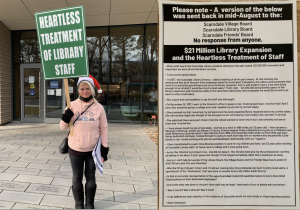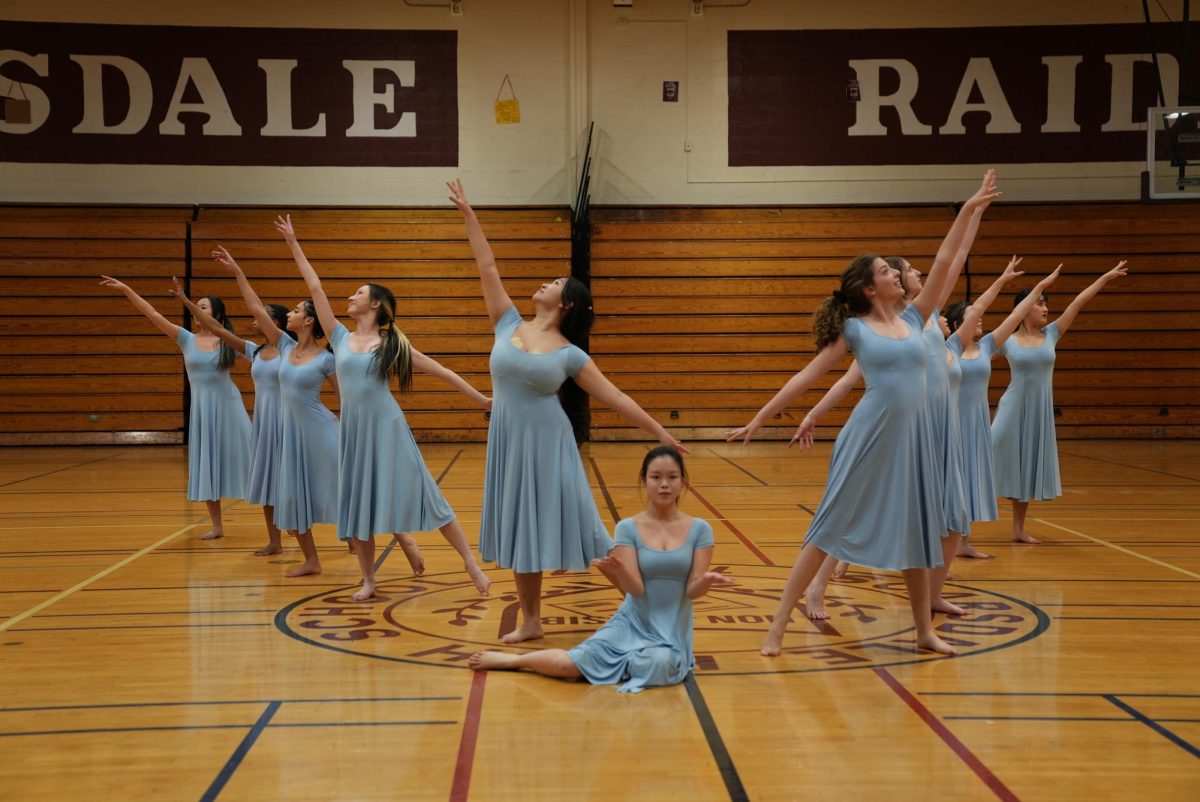Editorial: Why We Should Keep Asynchronous Wednesdays
Scarsdale High School should keep asynchronous Wednesdays for students to work on projects and meet with teachers.
March 23, 2021
Last Friday, Principal Kenneth Bonamo announced the new schedule for all students at SHS starting on April 19th. With this change comes a wide range of drastic modifications – the merging of cohorts, extension of each period to 50 minutes, and even having more students in each classroom. What a myriad of SHS students found most shocking is the return to a 5-day school week— that is, the exchange of Wednesday as an asynchronous time slot for a traditional, 7-period school day. While high schoolers understand that administrators have students’ best educational interests at heart, this decision will only exacerbate the difficulties of an already confusing time.
The question everyone would like an answer to is “why?” To answer that, it’s necessary to consider the perspective of the administrators at SHS, as well as some of our parents. Exhibit A: students are using the allotted time on Wednesdays purely as time off from school, rather than their intended purpose. Though it’s doubtful that any student would testify to sleeping in for an hour or three on Wednesday mornings, it is likely a common occurrence. Even on days when cross-cohort classes are not being taught in the morning, students probably hit the “snooze” button more often than they would care to admit. Granted, for a severely sleep-deprived generation of teenagers, taking the time to recover from all-nighter study sessions is just one reason to keep Wednesdays free. Still, to those who feel as if sleep is a lesser priority than schoolwork, perhaps the decision to remove asynchronous Wednesdays is the responsible option. Yet many students have not been given this luxury. While the current hybrid model limits the synchronous class time to a certain extent, many teachers see it as an opportunity to assign even more tasks, with the logic behind such behavior based on equating more “free” time to the ability to do more work. Through the use of asynchronous quizzes, individual and group projects, or the occasional Edpuzzle, teachers have found numerous ways to effectively fill up this “free” time in students’ lives. Without Wednesdays to act as a midweek buffer, students may be subjected to unreasonable amounts of work that would have otherwise been manageable.
Additionally, the removal of asynchronous Wednesdays and its implications for tutorial time are placed into question. Reduced student engagement as a result of different factors associated with distance learning has made retaining information increasingly challenging, only highlighting the importance of seeking office hours and extra help. With the availability of teachers guaranteed by nearly an entire day, students have the opportunity to do so. This use of tutorial time has also leveled the playing field for all-virtual students, who will likely struggle to coordinate these meetings with teachers now that Wednesdays may not be available. Whether or not students choose to use these Wednesdays productively should be left to them, as the sense of freedom that comes with it serves a crucial lesson in time management. Those who fail to properly use the time provided on Wednesdays will ultimately hinder themselves, and, while it sounds harsh, should be held responsible for their oversights. But that is no reason to do away with asynchronous Wednesdays in their entirety.
Exhibit B: schools need to return to a 5-day schedule anyways, so we should start sooner rather than later. But is this something that we need to do? We only have about half a semester left of this school year, so it seems strange to throw this curveball in everyone’s schedules right now. Having to keep track of every varied weekly schedule has only added to the collective confusion and frustration brought upon by the pandemic. Besides, if we don’t return to a traditional 5-day school week, is it really an issue? Schools in France already use a 4-day model, with Wednesdays serving only as a midweek break. Even in the U.S., roughly 560 districts spread across 25 states have adopted a 4-day model. The effects of having a 4-day schedule are somewhat inconclusive, though current research suggests increased attendance as extracurricular commitments can be assigned to the off-day, reduced operating costs, and, most prominently, a better collective mental well-being among students.
Mental health, above all else, has been a defining characteristic of SHS and has been emphasized exponentially more during these unprecedented times. This year, in particular, teachers and staff have made several efforts to both monitor and improve the mental health of their students, including sporadic mental health surveys, socially distant meditation sessions, and schoolwide walks. And it is in this movement towards maintaining mental health where the argument for asynchronous Wednesdays is at its strongest. With the aforementioned sense of freedom provided by asynchronous Wednesdays, students can explore new hobbies and interests, or even just try to get out of the house for a change. Especially for all-virtual students, who spend so much time sitting in front of a camera, a lack of a midweek buffer will only be mentally draining. Removing a day that is critical to preserving the mental health of the student population at large completely undermines previous efforts in doing the same.
The devastating effects of the COVID pandemic will be felt long after its nearing conclusion, but the changes made to our world were not all for the worse; it has become clear that many of the adaptations made to combat this crisis will be used long into the future given their evident utility. Beyond the confines of SHS, live-streaming sports is just one example of such adaptations that we will undoubtedly employ regardless of a need to maintain social distancing. However, the issue with removing asynchronous Wednesdays isn’t just in removing asynchronous Wednesdays— if that makes any sense at all. It’s that these sudden changes were a surprise to most students. Of course, we’re represented by an especially proactive student body, and several Board of Education meetings are publicized, though it still doesn’t seem like our voices have been heard quite clearly enough. Despite student opposition towards removing asynchronous Wednesdays, here administrators stand, removing asynchronous Wednesdays. Then there’s the hypocrisy in the administration’s belief that the inevitable return to a 5-day week is rooted in bolstering mental health, when just months prior, the initial decision to have asynchronous Wednesdays was justified for the same reason. At the very least, some consistency would be greatly appreciated. So, perhaps it’s up to us, the students (or a certain student-run journal at SHS), to call attention to a debate we’d like to settle. Scarsdale’s motto has always been “non sibi,” meaning “not for oneself,” though everyone already knew that. Hopefully, SHS can finally hold itself to that standard.



























Isabella G • Mar 24, 2021 at 12:09 am
I strongly agree with the overall argument to keep Wednesdays asynchronous and open to the students’ discretion. I think changing the schedule too many times within the year can, indeed, be more overwhelming than necessary!
Regarding a 4-day schedule in the future, I think the idea has merit. This type of schedule can provide the freedom to focus on time management, mental health, and, quite honestly, a bit more “relaxation” that high school students need more of I think.